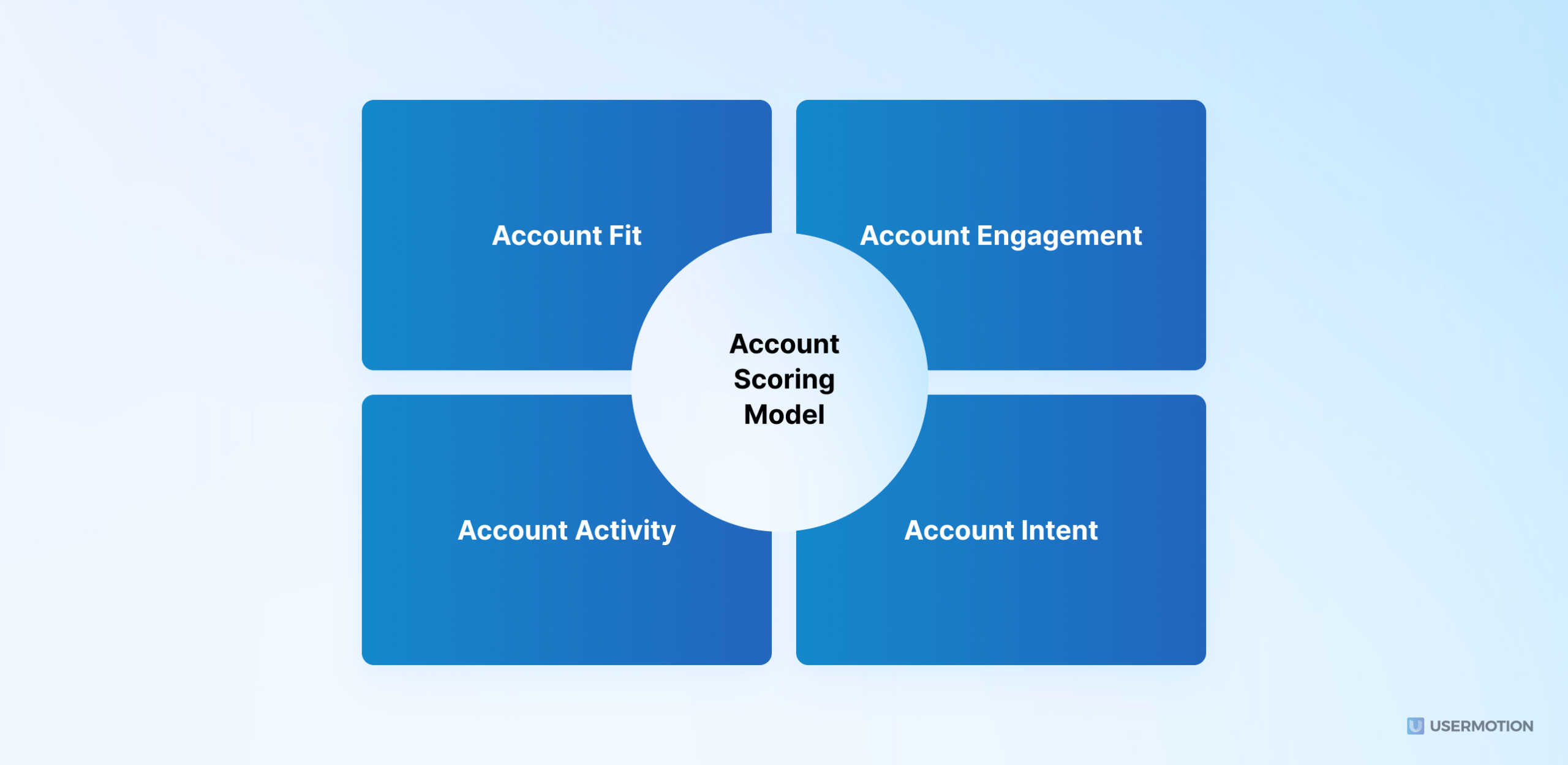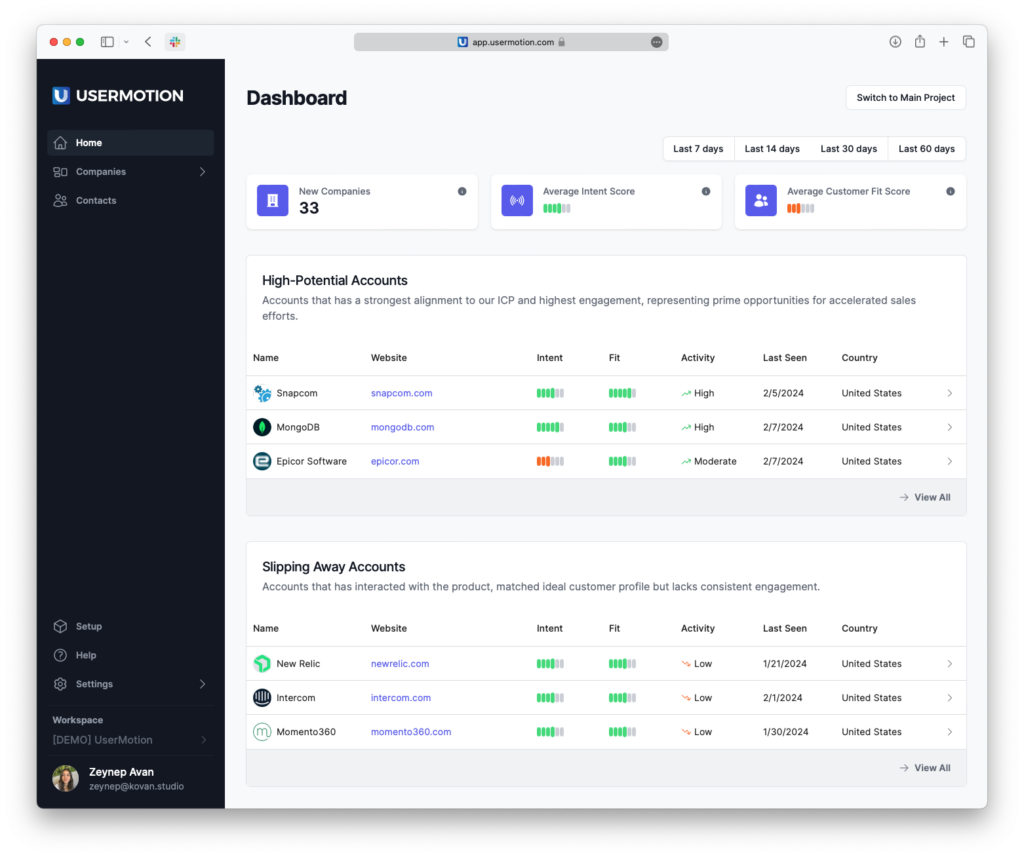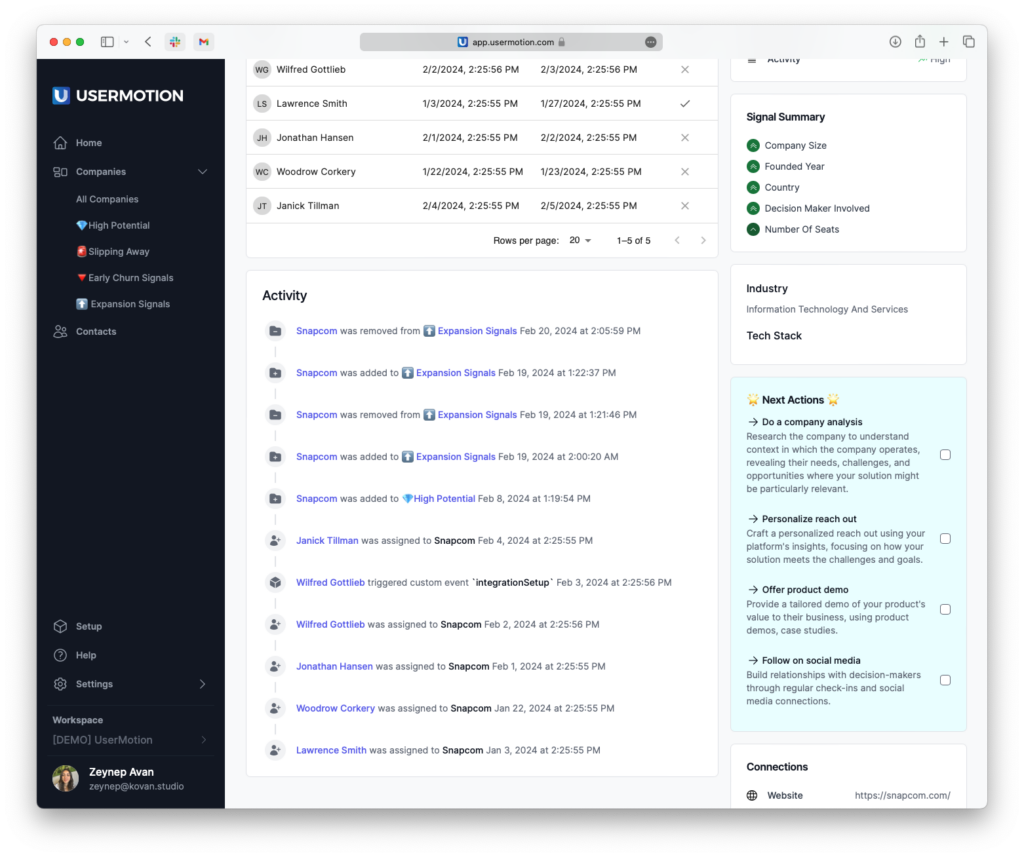Lead scoring is all about evaluating and ranking potential customers based on your set criteria to identify the most promising prospects.
But what if you’re dealing with prospects that have multiple leads, more than one decision maker, and various avenues of upsells/cross sells.
This makes selling complex, and predictive lead scoring isn’t enough to properly score your lead companies. You need something more – and that is called account scoring.
In this article, we’ll share all about account-based scoring, and how you can use it to your advantage.
What is Account Scoring?
Account scoring is the process of evaluating and ranking prospects or accounts based on their likelihood to make a purchase or become valuable customers for your business.
The scoring system is typically built on criteria that align with the characteristics of your Ideal Customer Profile (ICP). The highest value in the system denotes the accounts being most likely to make a purchase from your business.
How Account Scoring and Account Based Marketing Connected?
ABM (Account-based Marketing) is a growth strategy of targeting high-value B2B buyers as a market of their own, with personalized campaigns and specially designed inbound content marketing.
Account scoring and ABM (Account-Based Marketing) are closely connected in helping businesses focus their sales and marketing efforts.
Account scoring is about figuring out which prospects or accounts are most likely to buy from you. It uses a scoring system based on what your ideal customer looks like. The higher the score, the more likely an account will buy from your business.
ABM is a strategy where businesses treat high-value B2B buyers as their own special market. They use personalized marketing campaigns aimed directly at these buyers.
Here’s how they connect:
- Account scoring helps you pick out which accounts are most important.
- ABM then uses this information to target these important accounts with personalized marketing.
So, account scoring sorts out who you should focus on, and ABM is how you focus on them. Together, they make sure your marketing and sales efforts go towards the accounts that are most likely to bring value to your business.
Account Scoring Model in B2B SaaS
Account scoring model is used in B2B SaaS to score accounts based on a set criteria. This helps sales and marketing teams direct their efforts towards accounts that are most likely to generate revenue and become repeat customers of the business.
When you’re dealing with multiple leads from the same company, it’s hard to segment and rank them in a simple predictive lead scoring system that ranks individuals. This would mean you have to manually select all the leads and synchronize their data.
Account scoring uses predictive scoring, which can calculate scores with AI, and plug it in a central data warehouse that contains the collective firmographic knowledge of each lead.
For example, UserMotion’s sales intelligence system lets you score accounts without switching your predictive score tool or CRM.
How to Score Accounts: 5 Simple Ways
Scoring accounts is a multi-step process. Here’s 5 ways in which you can get started:
1. Identify the Metrics for Scoring the ICP (Ideal Customer Profile)
An ICP is the kind of customer that is most suited to buy from you.
Just because the entire Internet is your playground, doesn’t mean you need to target anyone and everyone. After all, targeting irrelevant accounts leads to wasted resources, cluttered conversion data, more churn, and overall disappointing sales numbers.
If you’ve been in the business for long, it’s highly likely that you already have a pool of customers. Your work begins at identifying key characteristics and patterns from those accounts.
You need to be looking for:
- Company size
- Key decision makers
- Scale of operation
- Location, etc.
It’s important to nail the ICP, but understand that determining it is a lifelong process, as new data values keep adding to it.
Manually keeping track of these changes is tough, which is where UserMotion steps in. It takes care of defining your ICP by studying your customer profiles and making sure it stays updated over time.
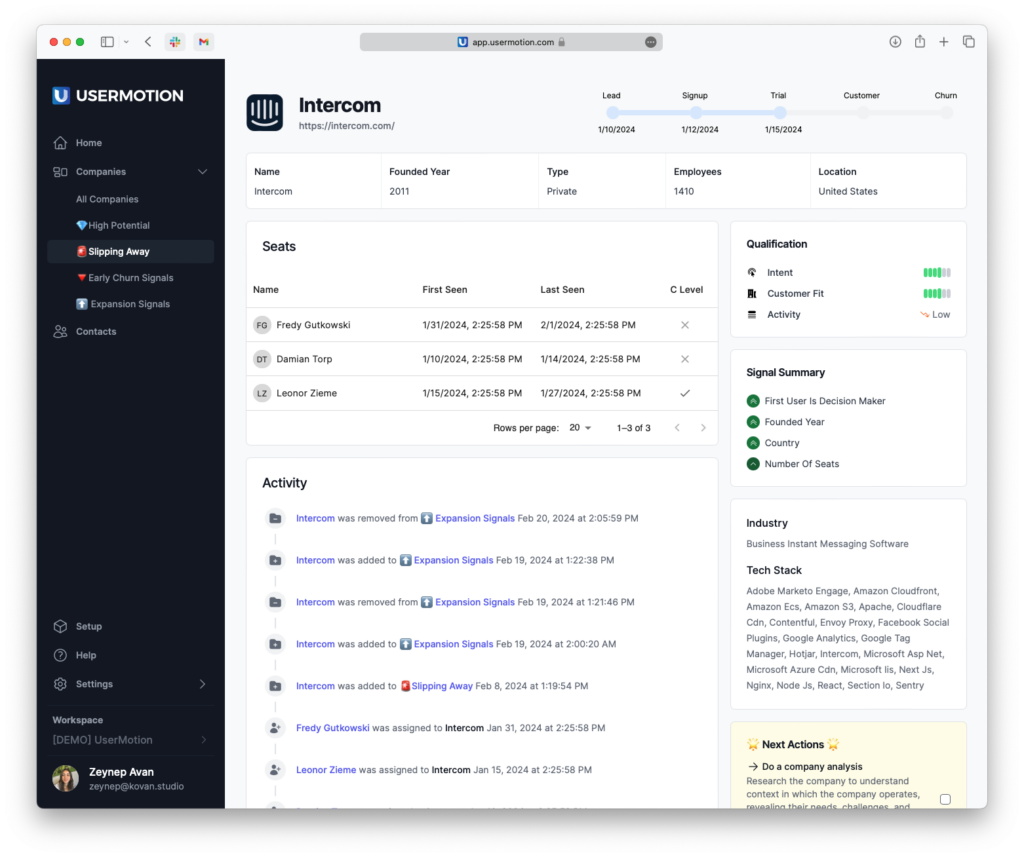
2. Identify Stakeholders From Each Account
The difference between lead scoring and account scoring is that with account scoring, there are multiple leads within the same company. This requires an expanded assessment of the account, and building a relationship map with the entire organization.
The relationship map represents the key decision-makers, and their corresponding activity on the website.
Once you have the relationship sorted, you can track the lead activity and take cue on how to nurture them.
Here’s how UserMotion lists out account activity for each lead on a key account.
3. Establish The Account Scoring Criteria
When you’re scoring an account, you need guardrails and a clear set of qualitative and quantitative metrics. Those metrics fall into three major types:
| Type | Definition | Example |
| Engagement and Activity | Details about the accounts most interested in your product, as measured by UserMotion’s AI-based product usage analytics, CRM data and Product-Qualified Account (PQA) metrics. | Lead 1 spent 10 minutes exploring different product pages on the website. Lead 2 opened and clicked through an email newsletter promoting a new feature. Lead 3 installs integrations. Lead 4 completes the key activation events. |
| Firmographics | Details about the company’s industry, annual revenue, employee size, and other ICP characteristics for customer fit scores. | Company ABC operates in the healthcare industry with an annual revenue of $5 million.User 3’s company is a mid-sized enterprise with 200 employees. |
| Technographics | Details about the software and technologies employed by the company. | User 4’s company uses Salesforce as its primary customer relationship management (CRM) tool. Company XYZ uses the latest version of Adobe Creative Cloud for design and marketing tasks. |
P.S. UserMotion integrates with your tech stack and CRM to help you in identifying and scoring key accounts.
4. Collaborate with Sales and Marketing Teams
If your scale of operation isn’t massive, you can get your salespeople to design the account scoring criteria. Salespeople have their pulse at the moment and are uniquely qualified to evaluate the metrics which have historically led to most conversions.
5. Qualify and Segment Accounts
If you already have an ICP, a repository of your leading accounts, and everyone on board, then all that’s left is qualification and prioritization of accounts to target. The real work – starts here.
You can identify the accounts from your ICP, by asking two crucial questions:
- Which accounts have the potential to create the highest revenue for your business?
- Which accounts have the biggest probability of buying from you.
Sorting out prospects through the lens of these questions will help you in building your target account list.
Various Types of Account Stakeholders
We’re talking a lot about “different leads in the same business.” But who are those?
To state simply, they are the stakeholders – the key decision makers who can hold the power of signing new contracts or closing the account altogether.
Since account scoring and account-based marketing is about building relationships with your customers, you must know the main kinds of people you’ll be dealing with in each company.
Here are the three types of stakeholders:
- The C-Suite
C-Suite or authorities are stakeholders that aren’t involved in the buying process, but have makro sway over the final call.
Shareholders, board of directors, founders/owners, the legal team, etc, and all authoritative figures.
Building a relationship with authority figures is crucial if you want a company to become a valuable and recurring customer to your business.
- The Users
Users are the most important piece of the puzzle, because they have direct knowledge of your product. They’ve used it, they know what works and what doesn’t. End users include beneficiaries who directly benefit from the product, and direct and secondary users who use your product on a daily/weekly basis.
- The Product Team
The product build team is the group working together on a product. They handle client communication, set and meet product goals, and stick to time and budget limits. These include product managers, company liaisons, product developers, development partners, etc.
Why You Need an Account Scoring Model
Account scoring uses an AI-trained model to analyze product, marketing, and sales data to score leads and accounts. This arms your sales team with the right information to convert and retain customers.
Here’s are the many ways in which an account-scoring model can supercharge your sales:
- Resource Optimization: Account scoring gives your sales team the right information regarding each lead. This helps them in allocating resources effectively by focusing on accounts that have the highest potential return on investment. This frees them from wasting time on low-value opportunities.
- Efficiency: Sales teams see an immediate improvement in their performance, as the prospects are scored based on their likelihood of conversion. This results in an increase in successful outcomes, and a reduction in the time and energy spent on each lead.
- Customer Retention: By identifying and nurturing accounts that are more likely to become long-term customers, businesses have an increased chance in retaining the accounts and increasing their customer lifetime value.
- Data-Driven Decision Making: Account scoring takes the guesswork out by letting marketing and sales teams make informed decisions regarding prospects.
Save Time And Resources with Account-Scoring on UserMotion
B2B sales have always been complex – and it keeps getting harder to get the buyer journey right.
Predictive lead scoring has been helpful, but it’s no longer enough.
To have a full pipeline and an accomplished sales team, you need an AI-based sales intelligence tool for scoring leads and accounts, like UserMotion.
UserMotion’s stunning AI keeps your pipeline full of qualified accounts that are ready to buy from you.
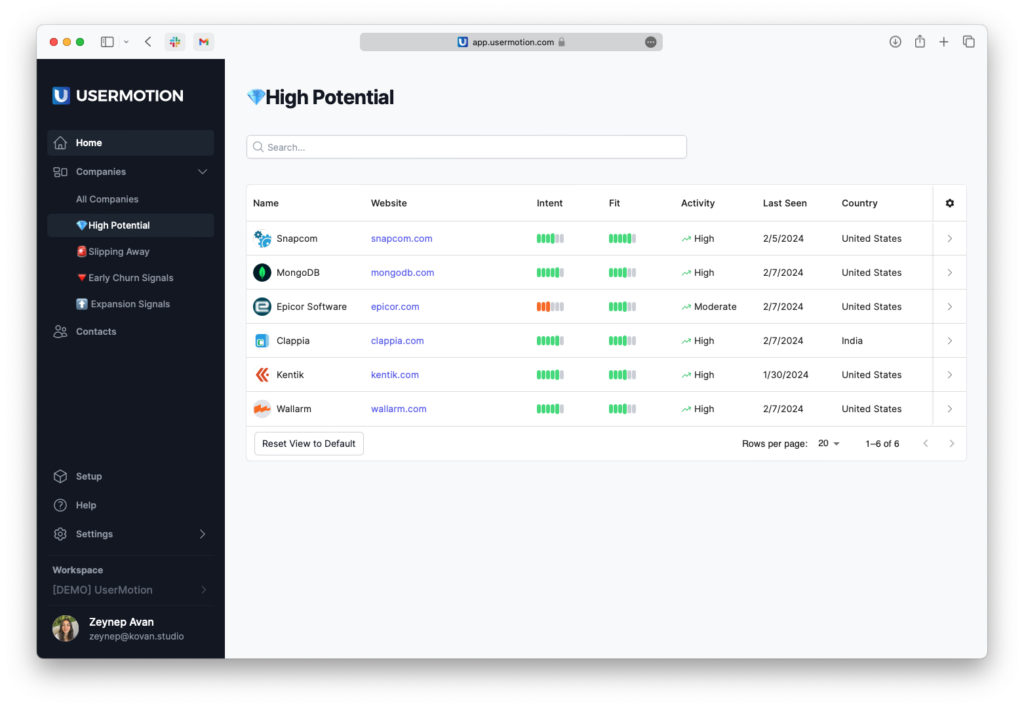
Just set up your workplace by connecting CRM, payment provider, and product analytics stack. All of these integrations are 1-click setup integrations so no need to support from engineering team.
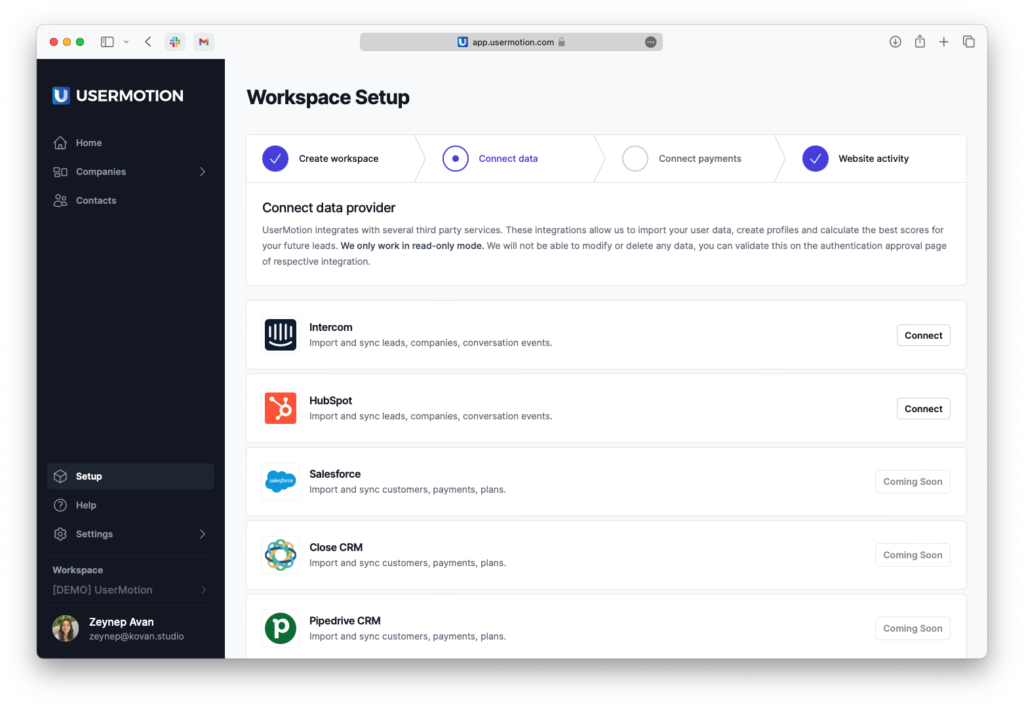
Account scoring is complicated. There can be challenges if each stakeholder isn’t taken care of. With UserMotion, you can help your account throughout its buyer journey and build a pipeline that’s worthy of your sales team. Give UserMotion a try now to score your accounts!
Frequently Asked Questions
Account scoring model is a lead scoring strategy for B2B businesses that target prospects that have multiple leads, more than one decision maker, and various engagement and activity points.
For scoring an account in B2B sales, you need:
1. Company demographics and all related information
2. Account-level product usage data
3. Account-level engagement data
4. Account-level activity data
5. Key events

